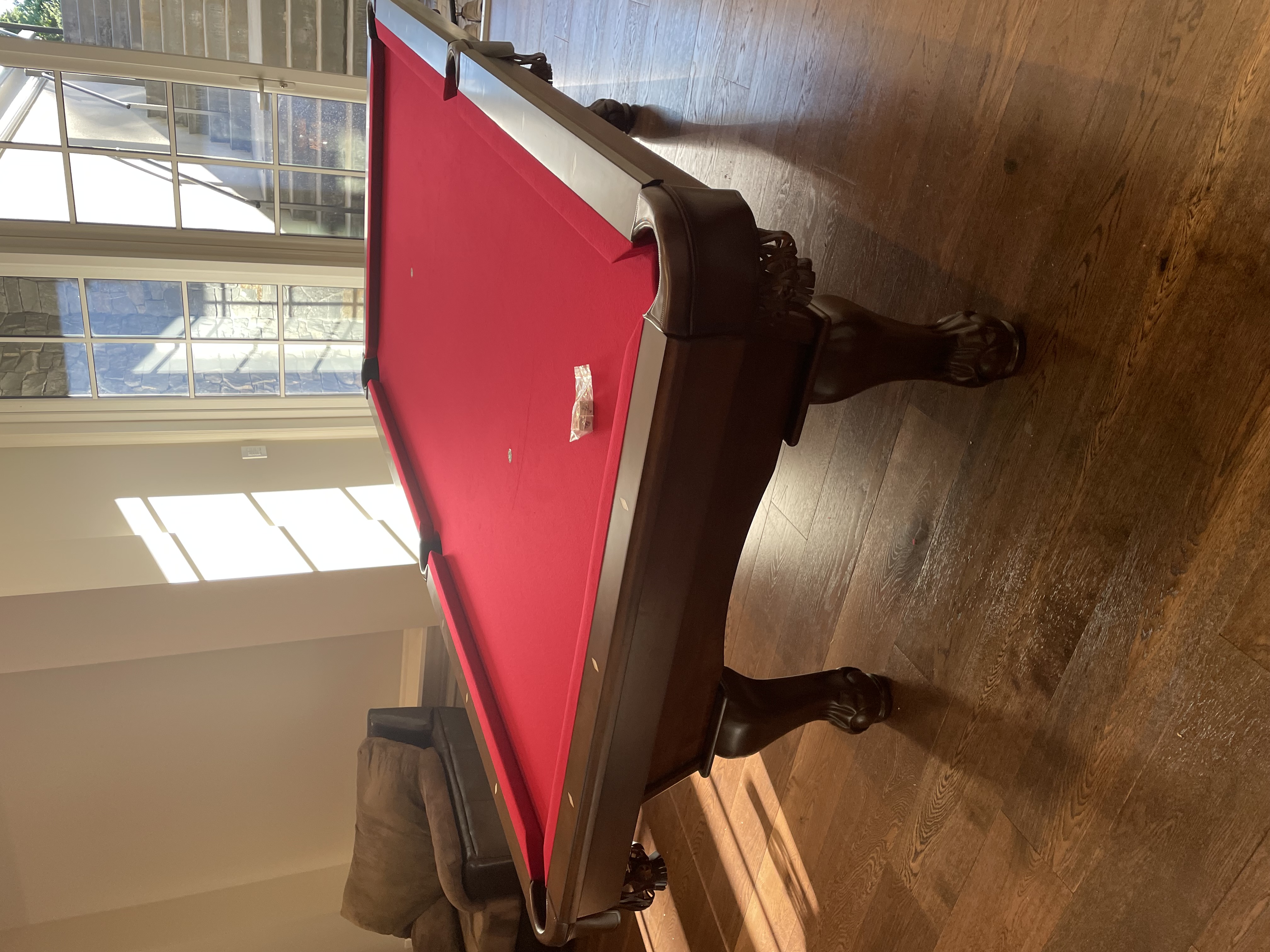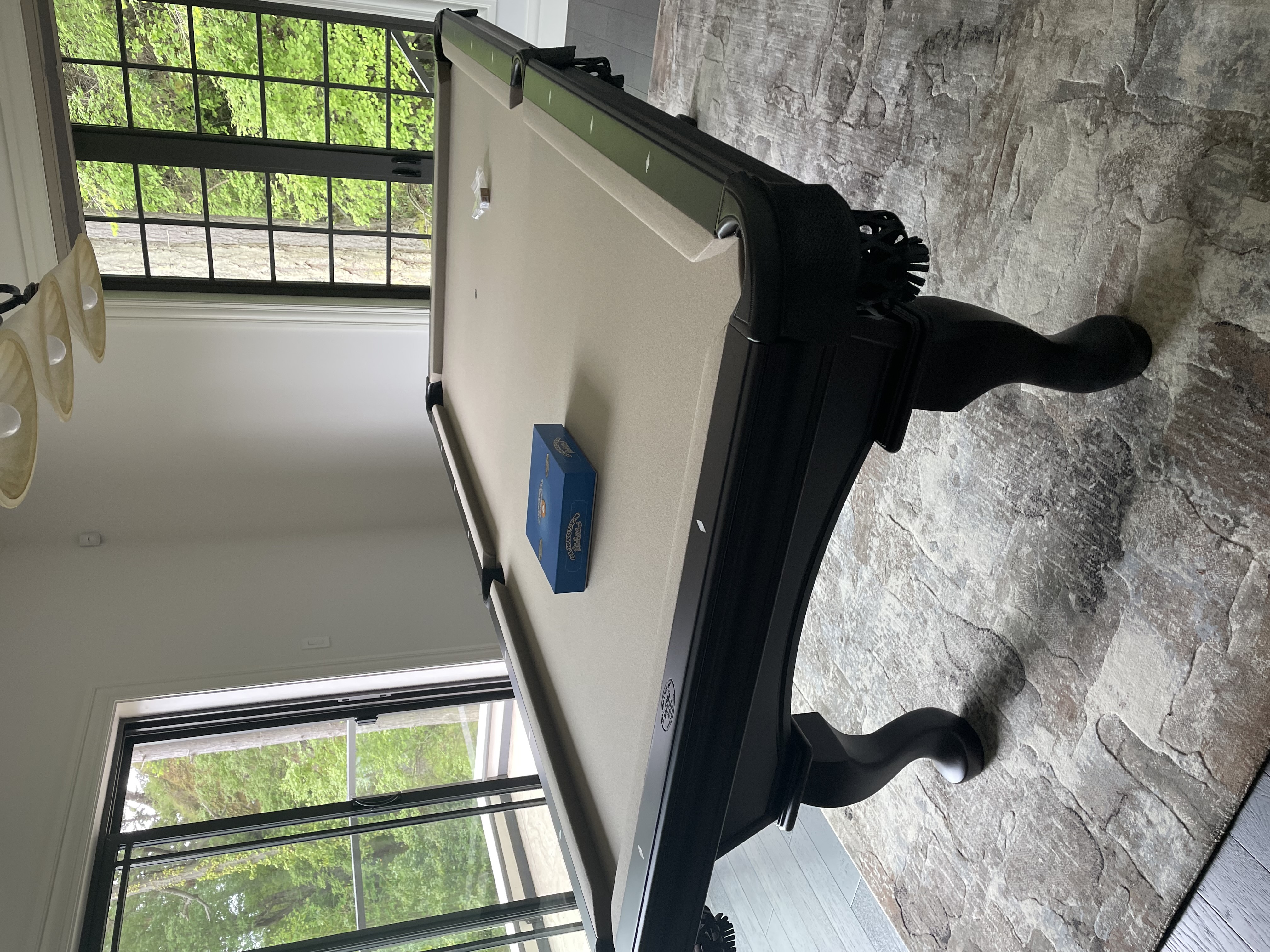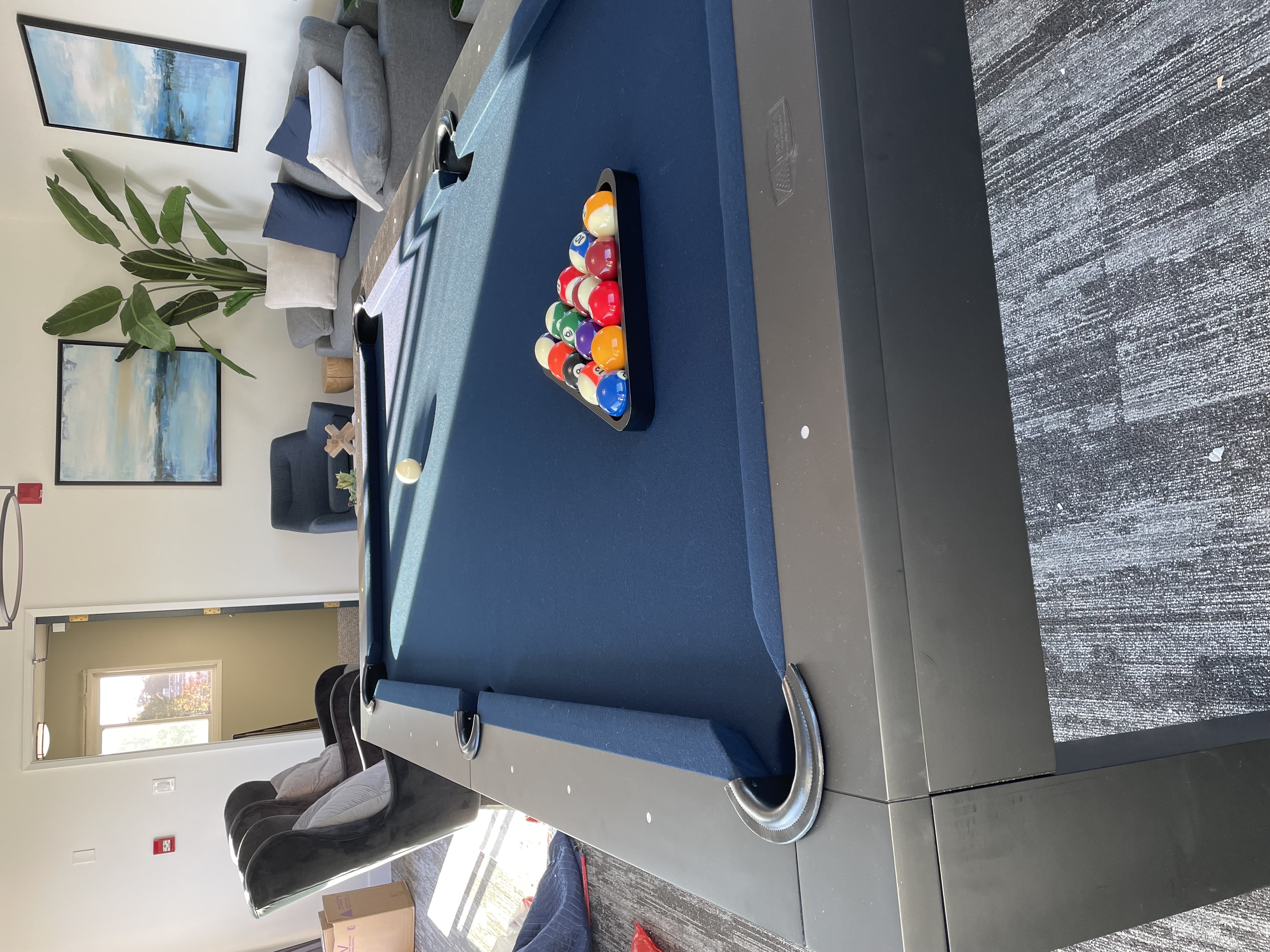What is a Pool Table Made Of? Slate, MDF and other materials
Posted by Home Billiards on 18th Nov 2022
When choosing a pool table, it’s tempting to focus on the flashy questions first, such as what colour of felt do I want, or what wood finish would go well with my decor? While there’s nothing wrong with this, it’s skipping over a much more important question that not only affects play, but the longevity of your table: what is a pool table made of?
Because a pool table isn’t just one thing, but rather a combination of multiple things, we thought it would be helpful to break down the different parts of pool tables, what they’re made of, and how to choose the right material for each piece to suit your needs.
What is a pool table’s playing surface made of?
As explained in our pool table buying guide, the most important part of any pool table is the playing surface, also called the table top. This refers to the material on which your cloth is placed, and that all play takes place on.
To simplify things, you basically have two categories of pool table top material: slate and non-slate.
What is a slate pool table?
Considered the highest quality table top material, slate refers to a rock-like material that’s been split into wide, flat pieces. This material is typically composed of clay, quartz, and sand, and is cut into perfectly flat surfaces as dense as stone and as smooth as glass.
Its smoothness is why slate is the go-to pool table material for any serious player, and its denseness makes it virtually impervious to warping, moisture, and other environmental degradation more common in synthetic and wooden tables.
This rock-like quality also lends to much higher durability, which allows slate pool tables to last longer, endure harder, longer play, and be much less likely to require costly repairs or replacements in the future.

It’s important to remember this when looking at the price tags of slate tables compared to synthetic tables. While synthetic tables may be more affordable initially, their susceptibility to damage can leave them costing more in the long run.
A quick note: At Home Billiards, we care about quality, a lot. All pool tables sold at Home Billiards are made of slate because we believe it's a superior material that will keep you playing for years. We realize this might not work for everyone so keep reading to learn about the other materials a pool table is made of.
MDF and other synthetic tables
The other category of table material is synthetic, which includes particle board, honeycomb, and Slatron tables.
In order of lowest quality and least expensive to the highest quality and most expensive, here’s what you can expect with each of these materials.
Particle Board (MDF)
Particle board is a material made from compressed wood chips and resin. While particle board tables are often very light and affordable, they are the lowest quality table top material you can get.
This results in them being more commonly damaged by condensation, temperature changes, hard play, everyday wear-and-tear, and other factors.
That said, if you’re just looking for a board to play on casually and aren’t overly worried about longevity, a particle board table is a great option and the perfect introduction to pool in the home.
Honeycomb
Slightly higher in quality than particle board tables are honeycomb tables, which are tables made from a honeycomb-like material compressed in layers of plastic.
They’re less prone to warping and are still on the lighter side, but they still suffer from a lot of the same long-term issues as particle board tables. Honeycomb material also isn’t the smoothest surface to play on.
Slatron
For the best possible surface that isn’t slate, Slatron, or Permaslate as it's also known, is a great option. Slatron tables are made from particle board encased in condensed and hardened plastic.
You can look at Slatron as the bridge between synthetic and slate. Its durability lends to a longer life with fewer issues than other synthetic options, and its quality lends to a smooth playing surface that approaches that of traditional slate.
Pro Tip: make sure your floors can handle the weight of a pool table.
Slate vs wood pool tables
So, how do you know whether a synthetic, MDF, or slate table better serves your needs? It largely comes down to your reasoning for wanting a pool table in the first place and your budget.
Slate tables are what the pros play on, they’re what you’ll find at any reputable pool tournament. This is why, if you want to take pool seriously, then slate is the only option.
Attached to this, if you value durability, have a higher budget, don’t mind dealing with and moving a heavier table, value eco-friendly-ness, and have a larger playing space, then a slate pool table is your best option.
If you’re only planning to play only for a short period of time, just want something to pass the time with friends or family, are working with a smaller budget, want a table that’s easier to move and ship if need be, or want more options regarding sizing, then a synthetic option might be more up your alley.
What is a pool table’s cloth made of?
With table tops out of the way, let’s now look at what pool table cloth, or pool table felt as it’s also called, is made of.
Pool tables made in the United States typically come with cloth made of a combination of wool and nylon, or wool and polyester. But it’s the wool that you really want to focus on when choosing your cloth material. As a general rule, the higher the percentage of wool in a pool table cloth, the more durable and smoother playing surface you get.

However, not all wool is the same; your two main options are woolen cloth and worsted wool. Woolen cloth is likely the material you’re used to feeling when playing a casual game of pool at a friend's house or local bar. It’s cheaper, creates a slower roll when playing, and is more susceptible to material shedding.
Worsted wool is what the pros use. It generally comes from much higher-quality wool sources, is made using highly specialised machinery, and provides a much smoother, more accurate, and more reliable level of play. As you might expect, this higher quality also comes with a higher price tag.
What is a pool table’s frame (or cabinet) made of?
You’ll often find that the material used in frames is chosen to accommodate the material of the table top. This is why, for example, you’ll find that slate tables, which tend to be heaviest, have frames and legs made of solid hardwood or a combination of wood and metal.

Table tops that don’t weigh as much as slate have a little more freedom when it comes to the material of their frames. For example, synthetic tables made out of MDF might also have MDF frames, or a combination of MDF and solid wood.
What are pool table bumpers made of?
In most cases, your main options for bumper material are natural gum and vulcanized synthetic rubber. But like with table tops, natural is best if you’re looking for the best quality possible, as cushions made of natural gum perform better and last much longer than synthetic cushions.
Regardless of material, a good test to gauge the quality of a pool table bumper is to shoot a ball into it. What you’re looking for is a good bounce. If there’s little-to-no bounce, it either means that the table’s cushions are dried out and need to be replaced, or they’re made of poor-quality materials.
How should you care for a pool table after you buy it?
Other than what is a pool table made of, how should I care for my table once I have it is another important question to answer before making a purchase.
After all, choosing a pool table made with high-quality materials is essential to ensuring quality play and longevity, but investing in good pool table care is equally as important.

Here are some easy things you can do to help keep your pool table surface, frame, cues, and other accessories in pristine shape for as long as possible:
- Don’t smoke around your pool table
- Cover your table with a pool table cover when not in use
- Avoid placing drinks or food on the table
- Avoid keeping the temperature in your pool table room too hot or too cold
- Minimise attempts at trick shots, particularly any that really dig into your cloth (such as trying to launch a ball into the air)
- Store your cues in a cue rack, stand or case to keep them from warping over time
- Don’t treat your pool table like a storage area and place things on top of it
- Remove chalk and dust after every play by gently brushing from one side of the table to the other
- Clean your balls using soap and water or a dedicated ball cleaner
For more tips, be sure to read this guide on how to clean your pool table.
Making your next pool table the right one
Hopefully, now you understand why one of the first questions to ask when narrowing down your options is: what is a pool table made of?
When you’re ready, browse our wide selection of pool tables for sale to find the perfect one for your needs (remember, we also offer free delivery and pool table installation!)
And if you’re not sure what you want, don’t worry! The Home Billiards family is always here to answer your questions and help point you in the right direction.

